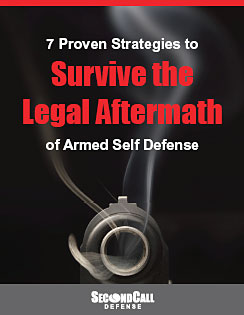Learning to Teach, Teaching to Learn
by Keith Coniglio
Over the last decade, the ranks of American gun owners have swelled dramatically. It would be nice to think all these new shooters have received professional instruction, but that’s not very realistic. Many would have had no clue where to begin, and no one to ask. Others would have turned to the Internet – and promptly gotten overwhelmed by hundreds of pages of raging opinion, stunning them into permanent procrastination.
But training is critical. A gun is just a tool, but it is not a forgiving one. Mishandling of a firearm, failure to proactive fundamental safety rules, ignorance of you specific gun’s features and functions – all can have deadly consequences.
In the absence of a certified instructor, many have historically turned to “the gun guy” (who is just as often “the gun girl” these days). No matter how much discretion they think they’ve exercised, these people have made themselves noticed. They’re the friend, relative, or coworker who has referenced range time or hunting trips with maturity and authority. Their vehicle may sport some bumper sticker or emblem that references a recognizable brand name or a pro-gun organization. Perhaps they let slip their knowledge of the local concealed carry application process or technical data about firearms or ballistics. Whatever the case, they’ve been subconsciously flagged as an approachable person who just might know some important things.
If you are one of those seeking an introduction to the world of firearms, thank you. A sincere desire to learn is one of the greatest gifts you can bring to the table, and it is greatly appreciated. In an effort to help you get the most from your search, I offer the suggestions below.
Learn from someone you trust rather than just someone you know. Many of us will naturally gravitate towards relatives, but this is not an arena for familial loyalty. You may feel obligated to follow bad advice or eschew asking pointed questions to avoid discord around the home front. It may be better to seek instruction from a knowledgeable acquaintance than an intimate.
Know how you learn before seeking instruction. Are you more verbal or tactile? Can you grasp concepts through adequate description, or do you need to be shown and let your hands do the learning? If you know yourself, you can look for a compatible teacher who “speaks your language.”
Leave the ego at home. Speak up and ask questions, even if it makes you feel foolish. I have often told my children that no one has ever died from embarrassment, but plenty have from ignorance. Don’t be afraid to say, “I don’t understand. Can you explain that in more detail or show me?” Conversely, remember that you sought your instructor so they can instruct. Ask questions for clarification, not to show off how much you think you know.
Trust, but verify. Seek more than one source of information, and don’t be shy (or lazy) about double-checking facts and advice that are offered. We’re all human, and misremember facts or hold bad habits. It does no harm to ask for a second opinion or do some web searching to independently verify legal points.
If you find yourself in the role of instructor, have fun but don’t take it lightly. The knowledge you are imparting, while perhaps trivial to you, will shape your student’s abilities and attitude towards guns and gun rights. It would do you – and the rest of the shooting community – well to remember these tips.
Familiarity does breed contempt. Sometimes, people are more likely to dismiss, ignore, or make assumptions about those they have known the longest. Don’t be offended if a relative seeks knowledge from someone other than yourself, and don’t feel uncomfortable about suggesting that they do.
Know your audience and don’t make assumptions. Ask questions about their learning style, and their motivation for seeking instruction. Are they technically oriented? Would they benefit from starting with field-stripping, or would it confuse or frustrate them? Do they want to focus on marksmanship? Are they overcoming a fear, or do they simply want to feel safe around a gun? Do they learn better from lecture or hands-on practice?
Be honest, direct, and welcoming. Don’t be shy about saying, “I don’t know, but I’ll look into it and get back to you.” Don’t muddy the waters with tangents and tirades. Provide clear instruction and immediate feedback, and ask questions of your own to gauge whether concepts are being correctly understood (try to make these conversations rather than quizzes). Avoid being heavy-handed when correcting mistakes, making observations about what “needs adjustment” rather than what was “bad” or “wrong.”
Don’t simply “teach shooting.” Rather, provide them with some mechanical and philosophical insight, in detail appropriate to their level of interest. Remove the sense of voodoo that has been layered onto firearms and gun ownership. Let them strip a gun and see how the parts move and operate. Talk about real-life examples of how our Second Amendment rights have ensured the survival of individuals and communities, and contrast it against the fates of those without such freedom.
Ensuring that the lessons of firearm safety, marksmanship, and culture are perpetuated is a vital responsibility for all gun owners, whether teacher or student. An armed citizen can defend against those who seek to do them harm; an educated citizen can defend against those who seek to curtail our freedoms.
Keith Coniglio is a father, software tester, NRA-certified pistol instructor, and devoted Second Amendment advocate. He is also the editor-in-chief of Descendants of Liberty Press, a site dedicated to rekindling Americans’ passion for – and defense of – their Constitutional rights and personal liberty.

